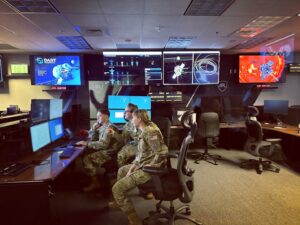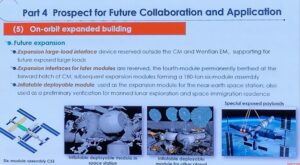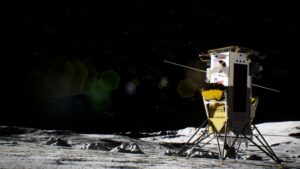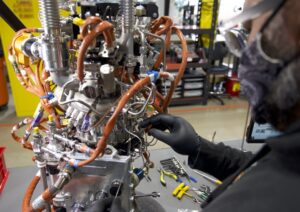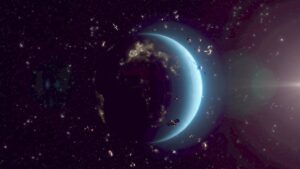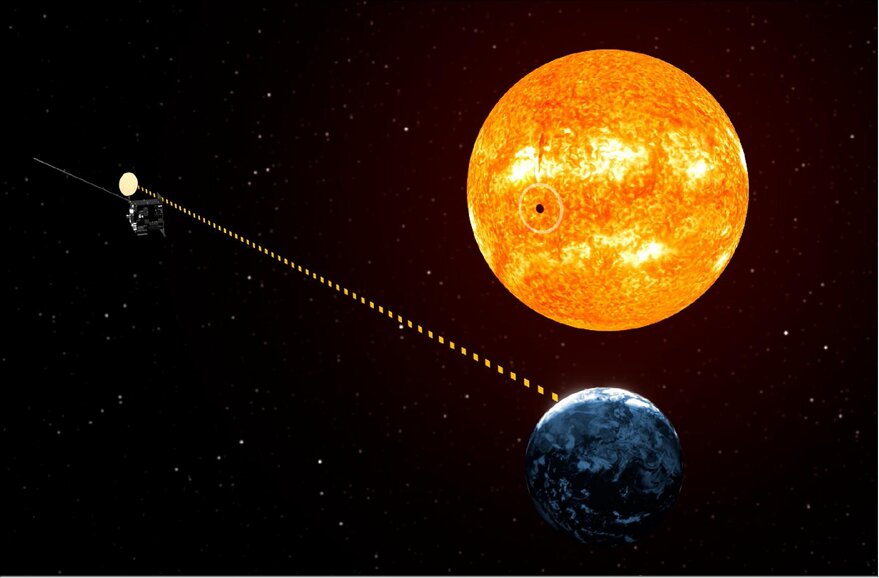
BALTIMORE – Vigil, a European Space Agency mission scheduled to launch in 2030, seeks to balance operational demands with the needs of the scientific community.
“We have not forgotten our science colleagues. In fact, they are important partners for the mission,” Giuseppe Mandorlo, Vigil project manager, said Jan. 29 at the American Meteorological Society annual meeting here.
Vigil will provide space weather data from sun-Earth Lagrange point 5. Data gathered from L5 could provide notice of four to five days of solar winds streaming toward Earth.
Data from Vigil sensors coupled with the National Oceanic and Atmospheric Administration’s Space Weather Follow-On (SWFO L1) mission destined for L1 promise to improve early warning of solar storms, Mandorlo said.
45-Month Journey
Budget constraints, though, will prevent Vigil from making a speedy journey to L5. The spacecraft is set to travel to geostationary transfer orbit on an Ariane 6 rocket. Then, it will take some 45 months to reach L5.
Still, Vigil will begin gathering and sharing useful observations about 26 months after launch, Mandorlo said.
Scientific Data
While operational data flow with low latency is a priority, Vigil also will supply data for scientific research whenever possible.
“When Vigil is overhead, we will extra bandwidth to support the science,” Mandorlo said. “With that data, the scientific community is going to help us improve our future models.”
Vigil Instruments
The Vigil spacecraft is based on Airbus’ Astrobus. Like NOAA’s Geostationary Operational Environmental Satellite U and SWFO L1, Vigil includes a Compact Coronagraph developed by the U.S. Naval Research Laboratory.
A Heliographic Imager from Rome-based Leonardo SpA and a Photo-Magnetospheric field Imager from Germany’s Max Planck Institute will also fly on Vigil.
In addition, Vigil will carry a Plasma Analyzer from the Mullard Space Science Laboratory in London and an Imperial College of London Magnetometer.
NASA is selecting Vigil’s sixth instrument, an extreme ultraviolet imager.
- SEO Powered Content & PR Distribution. Get Amplified Today.
- PlatoData.Network Vertical Generative Ai. Empower Yourself. Access Here.
- PlatoAiStream. Web3 Intelligence. Knowledge Amplified. Access Here.
- PlatoESG. Carbon, CleanTech, Energy, Environment, Solar, Waste Management. Access Here.
- PlatoHealth. Biotech and Clinical Trials Intelligence. Access Here.
- Source: https://spacenews.com/esas-vigil-space-weather-mission-balances-operational-and-scientific-demands/
- :is
- :not
- 2030
- 26
- 29
- 45
- a
- About
- addition
- After
- agency
- also
- American
- an
- and
- annual
- ARE
- At
- atmospheric
- Balance
- balances
- Bandwidth
- based
- begin
- by
- carry
- colleagues
- College
- community
- compact
- constraints
- could
- coupled
- data
- Days
- demands
- destined
- developed
- Early
- earth
- environmental
- ESA
- European
- European Space Agency
- extra
- extreme
- fact
- field
- five
- flow
- For
- forgotten
- four
- from
- future
- gathered
- gathering
- going
- Have
- help
- here
- HTTPS
- Imperial
- Imperial College
- important
- improve
- in
- includes
- Institute
- instrument
- IT
- Jan
- journey
- jpg
- laboratory
- Latency
- launch
- like
- London
- Low
- Making
- manager
- max
- meeting
- Mission
- models
- months
- National
- needs
- Notice..
- observations
- of
- on
- operational
- Orbit
- our
- partners
- Plasma
- plato
- Plato Data Intelligence
- PlatoData
- Point
- possible
- prevent
- priority
- project
- promise
- provide
- reach
- research
- rocket
- s
- Said
- satellite
- scheduled
- Science
- scientific
- Scientific Research
- Seeks
- selecting
- sensors
- set
- sharing
- sixth
- Society
- solar
- some
- SPA
- Space
- spacecraft
- storms
- streaming
- supply
- support
- Take
- that
- The
- then
- they
- though?
- to
- toward
- transfer
- travel
- u.s.
- us
- useful
- warning
- we
- Weather
- whenever
- will
- winds
- with
- zephyrnet



